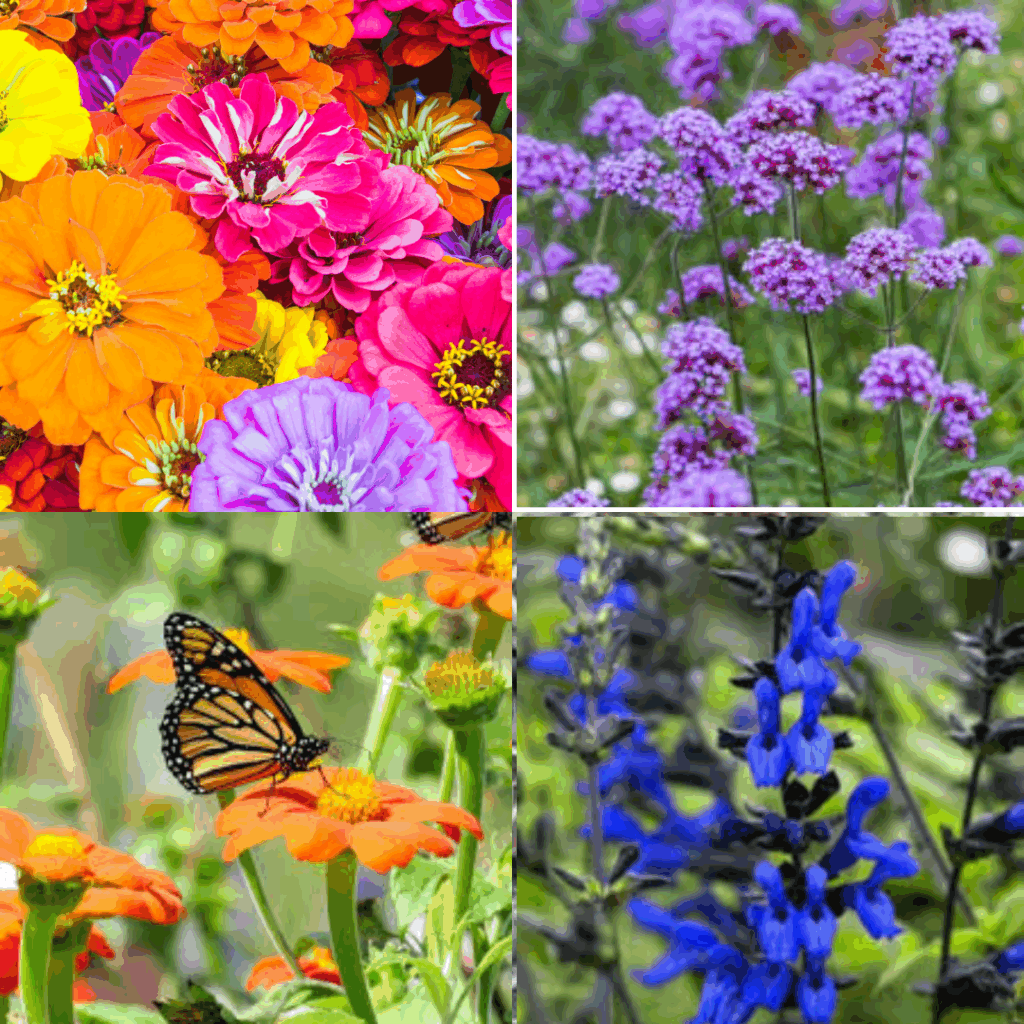Butterfly Magnets: If you plant them, they will come

One of the most-asked questions I and my Master Gardener and Master Naturalist volunteers get is about the most popular insect we know … butterflies: how to attract them and what is involved in creating a butterfly garden?
You know that phrase “If you plant them, they will come?” Well, it is true.
Today’s column focuses on the adult butterflies. Adult butterflies are attracted to a wide variety of nectar-producing plants. The larval (juvenile/baby) stage, the caterpillar, well, they are the picky eaters of the family. Most caterpillars have a specific food host plant that they need for food and coincidentally, the female butterflies choose to lay their eggs on. Evolution is a marvelous thing!
Now if you want butterflies or, for that matter, hummingbirds, moths, bees, and other insects, you need plants that support their needs. Food. Nectar and pollen. And there are no better plants to offer a continuous (and beautiful) supply of nectar and pollen than annuals.
Yes, we have great perennial plants, including natives, but they are sporadic bloomers. You have heard me say before I like to describe flowers like a jewelry box. The perennials are your good jewelry that you take out for special occasions, and the annuals are the costume jewelry you wear every day.
Both add to your wardrobe, but in different ways. Same with their nectar and pollen availability. Perennial plants and natives are great, but their bloom time is limited. And with the warming climate, their bloom can be accelerated and shortened.
Take, for example, the superstar native plants of fall that butterflies, especially monarchs, and other pollinators rely on late into the season. That fourth generation of monarchs, the ones that live nine-months and make the long trip to their overwintering homes in Mexico, depend on these plants.
But the hotter and hotter September and October months cause the goldenrod and, especially the native asters, to bloom for only a few days then fry up and dry up. So, what is a butterfly to do?
Annuals to the rescue. Annuals with their bright, showy continuous blossoms, are the nectar and pollen winners for attracting adult butterflies. These showy blooms are beauty to us, but for butterflies those colors and shapes of annual flowers are like restaurant billboards saying, “All you can eat buffet!”
But just as with our restaurants, there are more popular ones than others. Same is true for butterflies. There are some flower faves that butterflies seem to prefer. Some you may know, and some may be less familiar.
Zinnias, Verbena bonariensis, Black and Blue Salvia and Tithonia reign supreme for the backyard butterfly buffet.
Zinnias are one of our most reliable and old-time annual flowers in the garden. Their bright blossoms and their flat tops make for easy landing pads for the butterflies coming in for a landing like a Boeing 747.
Zinnias are also one of our most economical garden flowers. Just last week, I purchased several packages at the low price of 11 cents. Yes, you read that right, 11 cents in 2025. They just need a sunny spot with loose soil (they grow almost anywhere).
You sprinkle the seeds, and barely cover, water well and boom! Zinnias by July, and like most annuals, they will keep on blooming until Jack Frost visits for the hard frost kill. In recent years, new zinnias have given us more landscape options.
Profusion zinnias are an edging zinnia that forms a low ball of flowers. They are outstanding, and they are self-cleaning. No, they don’t come in and do the dishes, or wash behind their petals; self-cleaning in horticulture terms mean they drop their old blossoms without you having to sharpen your fingernail or get out your pruners to cut them off.
That is an issue with many annuals, homeowners ask why their annuals start looking so bedraggled and stop producing flowers. The answer is the old blossoms need to be removed, otherwise the plant directs its attention to seed production instead of making more flowers. This process is called deadheading.
Self-cleaning annuals let you skip the deadheading process. Profusion zinnias, the shade flower impatiens, and the wave series of petunias are all self-cleaning.
Another flower that is a butterfly magnet is one you may never have even seen, although they are becoming more popular in the nursery trade: the Verbena bonariensis and no, there isn’t really a common name other than “drumstick plant.:
This is an apt name for an odd-looking but plant. The flowers are borne along a long, tall stem and are composed of several individual flowers, and the entire floral structure is no bigger than a quarter.
But what they don’t have in size, the make up for in attraction. They are so attractive to butterflies that you could be inches away trying to snap some pictures of the butterflies nectaring (the verb meaning using their long tubelike mouthpart called the proboscis to go deep into the flower looking for nectar), they are not disturbed so focused on the verbena bonariensis. Definitely worth a try.
Another butterfly magnet is the black and blue salvia, or any tender perennial salvia in the Salvia gurantica species. These salvias dispel the myth that hummingbirds and butterflies are attracted to only red flowers.
Insects see in the ultraviolet, so do hummingbirds. So, what looks like dark blue and black flowers to us, is highly neon to butterflies and hummingbirds.
And finally, I left the best for last. Another flower you may not be familiar with, Tithonia, also known as the Mexican Sunflower. This bright orange daisy flower is a huge attractant to butterflies, and it is also huge in size.
Tithonia can grow to 6 feet tall by 6 feet wide. Tithonia is most easily found in seed form, but occasionally found as plants.
